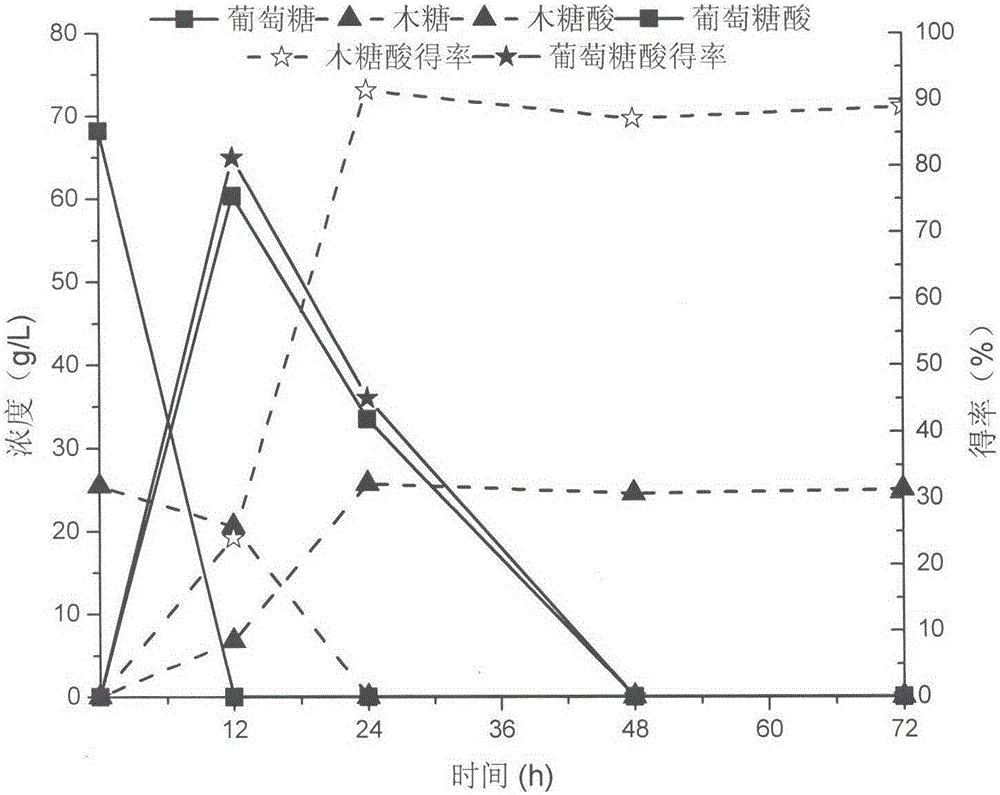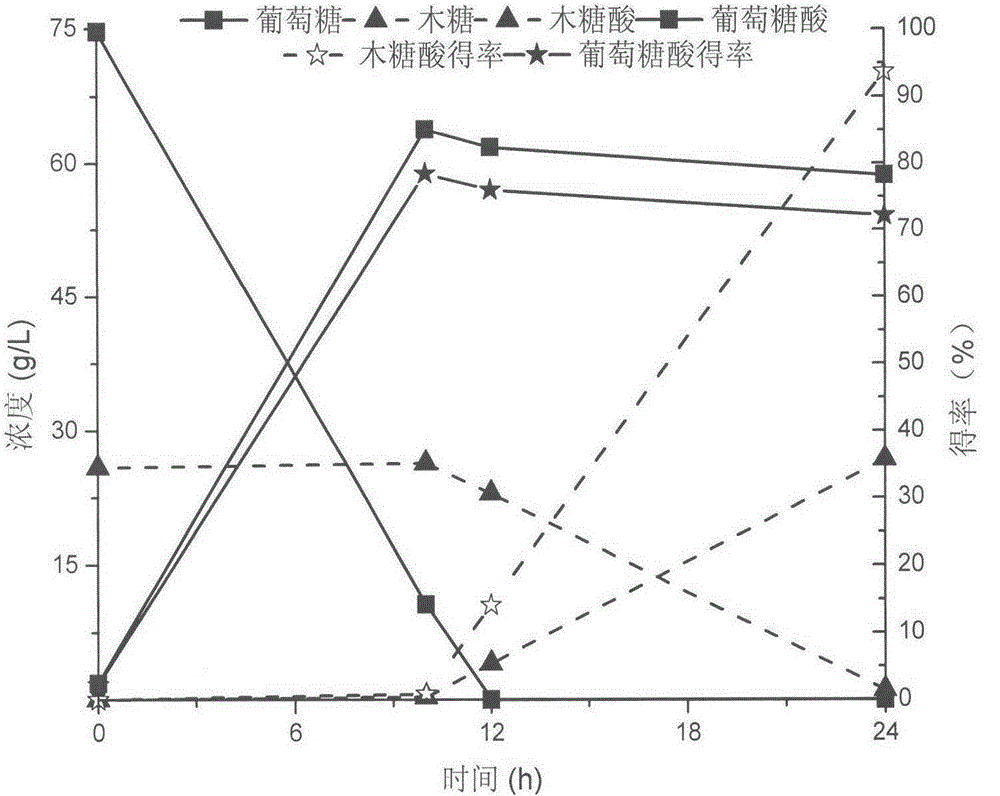Method of co-catalytically synthesizing various saccharic acids by virtue of synergism of metal ions and selective regulation whole-cell
A metal ion and selective technology, applied in the direction of fermentation, etc., can solve the problems of difficult to achieve synchronous and efficient synthesis of sugar acid, gluconic acid product yield loss, consumption, etc., to improve production efficiency, shorten reaction time, and increase product yield Effect
- Summary
- Abstract
- Description
- Claims
- Application Information
AI Technical Summary
Problems solved by technology
Method used
Image
Examples
Embodiment example 1
[0018] In a 3.0L mechanically ventilated reaction tank, add 1.5L of glucose and xylose mixture, wherein the initial concentrations of glucose and xylose are 75g / L and 25g / L, respectively. Oxygen was introduced and the tank was sealed to maintain the air pressure at 0.01-0.10MPa. Gluconobacter oxidans was inserted to a cell concentration of 1.0g / L to carry out the whole-cell catalytic reaction. The pH electrode is used to monitor and the pH value of the reaction system is adjusted to 3.0-6.0 by adding 30% (w / w) sodium hydroxide solution online automatically. A dissolved oxygen electrode is used to monitor and control the dissolved oxygen concentration in the reaction solution to not be lower than 1mg / L. Add 8 / L zinc oxide solid and 12 g / L ferric oxide solid. React until the glucose and xylose are completely consumed and stop the reaction to obtain sodium gluconate and sodium xylose product liquid. The concentrations of gluconic acid and xylonic acid in the product reach 58.6g...
Embodiment example 2
[0020] In a 10L mechanically ventilated reaction tank, add 7.0L lignocellulose hydrolyzate concentrate, wherein the concentrations of glucose and xylose are 202g / L and 95g / L respectively. Oxygen was introduced and the tank was sealed to maintain the air pressure at 0.10-0.10MPa. Gluconobacter oxidans was inserted to a cell concentration of 10g / L to carry out the whole-cell catalytic reaction. A pH electrode is used to monitor and automatically add 30% (w / w) NaOH solution online to adjust the pH value of the reaction body liquid to 5.0. The dissolved oxygen electrode is used to monitor and adjust the stirring rate to control the dissolved oxygen concentration in the reaction solution to not be lower than 1mg / L. Add zinc chloride and ferric chloride concentrated solutions until the concentrations of the two metal salts in the reaction system reach 10 g / L zinc chloride and 20 g / L ferric chloride respectively. React until the glucose and xylose are completely consumed and stop th...
PUM
 Login to View More
Login to View More Abstract
Description
Claims
Application Information
 Login to View More
Login to View More - R&D
- Intellectual Property
- Life Sciences
- Materials
- Tech Scout
- Unparalleled Data Quality
- Higher Quality Content
- 60% Fewer Hallucinations
Browse by: Latest US Patents, China's latest patents, Technical Efficacy Thesaurus, Application Domain, Technology Topic, Popular Technical Reports.
© 2025 PatSnap. All rights reserved.Legal|Privacy policy|Modern Slavery Act Transparency Statement|Sitemap|About US| Contact US: help@patsnap.com


